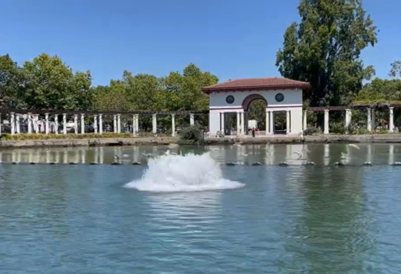For March 2024 updates on Lake Merritt water quality and safety guidance, visit this page.
On August 21, 2023, the City of Oakland issued this press release updating status of the Lake Merritt Water Quality Management Pilot Project.
On August 18, 2023, the San Francisco Bay Regional Water Quality Control Board reported on https://www.waterboards.ca.gov/sanfranciscobay/HAB_FAQ.html
that the red tide began to dissipate in early August and that “It has been over a week since we received a new report of discolored water and samples confirm there is a low presence of the species responsible for the red tide, Heterosigma akashiwo, in Bay waters. However, there are several months of warm weather ahead, and it is possible another bloom may form. We will continue to work with our partners to monitor the Bay. Discolored water and other signs of potential harmful algae blooms should be reported to the Water Boards by filling out the online HAB Report form or by contacting the HAB Hotline: Email: CyanoHAB.Reports@waterboards.ca.gov; Phone: 1-844-729-6466 (toll free). Observations of dead fish should also be reported to the SF Bay Harmful Algae Bloom 2023 project on iNaturalist set up by California Department of Fish and Wildlife for tracking and response.”
On August 15, 2023, the City of Oakland installed a new aeration fountain in Lake Merritt. The new fountain is located near the Pergola by El Embarcadero Avenue and replaces an out-of-service fountain at that location. By mixing air into the water, the fountain will improve dissolved oxygen (DO) levels in the Lake, helping to maintain an oxygenated refuge for aquatic life near the fountain. The design and spray settings on the new fountain maximize benefit to wildlife.
On August 1, 2023 the City of Oakland was notified that the same harmful algal bloom organism that caused red tides and fish kills throughout San Francisco Bay, including Lake Merritt last August and September, has been detected again. The Water Board posted this advisory. The August-September 2022 Lake Merritt fish kill is largely attributed to low dissolved oxygen brought on by the red tide. The City of Oakland is working to fast track the Lake Merritt Water Quality Management Pilot Project which will install an oxygenation device and an aeration device in the Lake to improve dissolved oxygen levels in an effort to reduce the risk of another fish kill. The City of Oakland is working quickly to order and install equipment and obtain necessary permits from regulatory agencies. The City will install the devices as soon as possible.
